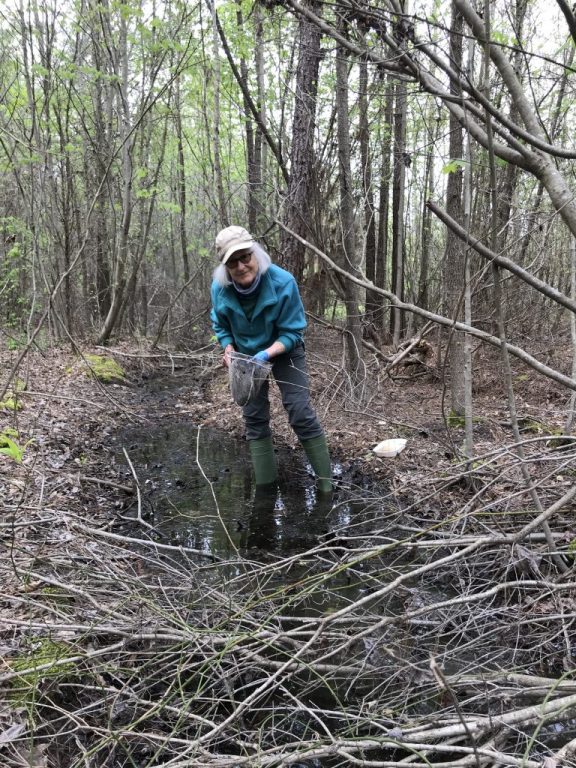Some Middle Peninsula Master Naturalist volunteers spend this time of year monitoring salamander populations. Using a state-approved protocol, they sterilize their boots and wade into vernal pools (temporary woodland ponds that appear in late winter/early spring) in search of recently-hatched salamander larvae. The volunteers also record variables such as water level height and temperature.
A Marbled salamander (Ambystoma opacum) larva.
This spring’s samples have revealed a drop in the number of marbled salamander larvae. Biologist Susan Watson at the Virginia Department of Game and Inland Fisheries notes that the population decline is probably not due to disease, as water levels have been low this spring across the area.
Both the Marbled and the state-threatened Mabee’s salamanders, the two species being observed in Gloucester, are very sensitive to changing environmental conditions, she said.
These adult salamanders are primarily land-dwelling. They return to temporary pools from f...
To view the rest of this article, you must log in. If you do not have an account with us, please subscribe here.

